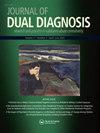西班牙双重诊断患者精神病住院趋势
IF 2.6
4区 医学
Q3 PSYCHIATRY
引用次数: 1
摘要
摘要目的物质使用障碍在精神健康障碍人群中非常普遍。同时发生的物质使用障碍与较差的预后和较差的治疗依从性有关。本研究的目的是分析1998年至2020年间精神科住院病人中物质使用障碍患病率的时间趋势。方法:本研究是一项回顾性研究,基于1998年至2020年期间西班牙马拉加18,367例住院治疗和7,124例精神健康障碍患者的登记。使用分段回归模型计算按性别和物质使用的时间趋势分析。采用排列检验确定拐点。在自相关和均方差假设的基础上进行敏感性分析。结果22.2%的入院者被诊断为精神健康障碍和并存的物质使用障碍。男性患病率(30.0%)高于女性(9.4%);P < 0.001)。两种疾病患者的住院时间缩短了2天(p < 0.001),首次入院时年龄更小(6.5岁;P < 0.001)。两组之间住院总次数没有差异。与女性相比,精神障碍和多种药物使用障碍是男性中最普遍的诊断,而人格障碍和酒精使用是女性中最常见的诊断。我们观察到2005年至2020年间双重诊断的患病率有所增加。在整个研究期间,每年与大麻相关的入院人数增加了3.0% (p < 0.001)。大麻和可卡因使用障碍在过去10年中已成为最普遍的疾病,而阿片类药物和酒精使用障碍则有所减少。结论在住院患者中,同时发生的物质使用障碍非常普遍。近年来,药物使用的模式发生了变化,大麻是最普遍的,而阿片剂和酒精药物的使用有所减少。我们需要设计一种专门的方法和综合治疗的患者同时发生的疾病。本文章由计算机程序翻译,如有差异,请以英文原文为准。
Trends in Psychiatric Hospitalizations of Patients With Dual Diagnosis in Spain
Abstract Objective Substance use disorders are highly prevalent in people living with a mental health disorder. Co-occurring substance use disorders have been associated with a worse prognosis and poorer adherence to treatment. The aim of this study was to analyze the temporal trends in the prevalence of substance use disorders in patients admitted to a psychiatric inpatient unit between 1998 and 2020. Methods This is a retrospective study based on the registry of 18,367 hospitalizations and 7,124 patients with a mental health disorder admitted during the period 1998 to 2020 in Malaga, Spain. Time trend analysis by gender and substance used was calculated using a segmented regression model. The permutation test was used to determine inflection points. A sensitivity analysis was performed based on the assumptions of autocorrelation and homoscedasticity. Results A total of 22.2% of admissions had a diagnosis of mental health disorder and co-occurring substance use disorders. Prevalence was higher among males (30.0%) than females (9.4%; p < .001). Patients with both disorders had a shorter length of stay by 2 days (p < .001) and a younger age at first admission (by 6.5 years; p < .001) compared to patients without substance use disorders. There was no difference in the total number of hospitalizations between the two groups. Psychotic disorders and multiple drug use disorders were the most prevalent diagnoses in men compared to women, whereas personality disorders and alcohol use were the most common diagnoses in women. We observed an increase in the prevalence of dual diagnosis between 2005 and 2020. There was a 3.0% increase in cannabis-related admissions per year during the whole study period (p < .001). Cannabis and cocaine use disorders have become the most prevalent in the last 10 years, while opioid and alcohol use disorders have decreased. Conclusions Co-occurring substance use disorders are highly prevalent among hospitalized patients. In recent years, the pattern of substance use has shifted, with cannabis being the most prevalent, while opiates and alcohol substance use have decreased. We need to devise a specialized approach and integrative treatment for patients with co-occurring disorders.
求助全文
通过发布文献求助,成功后即可免费获取论文全文。
去求助
来源期刊

Journal of Dual Diagnosis
Multiple-
CiteScore
4.90
自引率
13.60%
发文量
20
期刊介绍:
Journal of Dual Diagnosis is a quarterly, international publication that focuses on the full spectrum of complexities regarding dual diagnosis. The co-occurrence of mental health and substance use disorders, or “dual diagnosis,” is one of the quintessential issues in behavioral health. Why do such high rates of co-occurrence exist? What does it tell us about risk profiles? How do these linked disorders affect people, their families, and the communities in which they live? What are the natural paths to recovery? What specific treatments are most helpful and how can new ones be developed? How can we enhance the implementation of evidence-based practices at clinical, administrative, and policy levels? How can we help clients to learn active recovery skills and adopt needed supports, clinicians to master new interventions, programs to implement effective services, and communities to foster healthy adjustment? The Journal addresses each of these perplexing challenges.
 求助内容:
求助内容: 应助结果提醒方式:
应助结果提醒方式:


